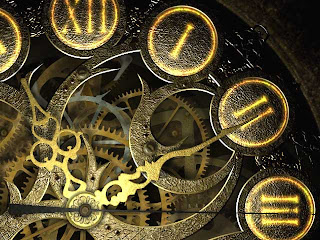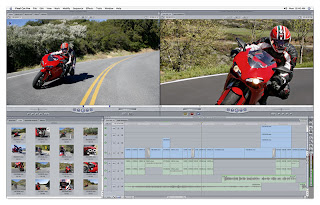The music industry is a very complex and controversial topic at the moment. This is due to the recent economic climate and the development of technology incorporating new means of media such as Internet and
Blu-Ray.
Music taste is a very contentious issue and is taken very seriously by many people. Many people compare this love of music and culture to a somewhat tribal culture, where any offence on music taste is taken as a personal insult. This dates back a very long time when there became the separation of skinheads and other social group. People believe that any insult on their music taste insults their dress sense, thoughts, beliefs and opinions. They may also take this so far as to say it is an insult on their family and their social class. Journalists and commentators believe that music is currently at the epicenter of popular culture. This means the new generation are growing up with music around them constantly; they are forever being bombarded by literature about new bands, concerts and new albums coming out.
Many artists however are just in the business to make money. There are still the small amount though that are focused on the art of the music and what they are producing rather than who and how many they are targeting. The mainstream more mass marketed music is normally synthetically made. This means they are put together for a purpose, to sell music; they are targeted to a mass audience to try and achieve the highest level of sales possible. A producer will have designed the band before meeting any of the potential members, then they will hold auditions knowing full well what they are looking for in the band. They will have criteria of what each member of the band must fulfill. This list of criteria will have been carefully designed to ensure the largest possible target audience is reached, it will ensure that each band member is single with no children, as well as being attractive and having a quirky character about them. If any of these criteria are absent

then the band member will either be discarded or they will be forced to change themselves so that they will fit the criteria. An example of a synthetic band would be The Spice Girls, they all had their own characters (scary, sporty, baby,posh,ginger), this ensures the largest possible audience can relate to them. A synthetic band will often have
synergistic connections in which almost every aspect of the production process will be free as the production studio own TV channels and magazines as well, this creates a mutual reliance. A famous example of
synergistic connection is Murdoch’s N
ewscorp. The second type of band is an organic band. This means they are not put together and have entered the industry simply to share the music they make with millions, not to make money or gain awards. Most organic bands have been playing together for a long time and therefore have natural chemistry between them. The record producers won’t have criteria for them to fulfill and often are all quite similar due to them coming from similar

backgrounds. The most famous example of an organic band is The Beatles who started performing together in 1960 and made music together up until the 1970s. The Beatles are prime examples of an organic band achieving far higher accolades than more recent synthetic bands have. The Beatles were very astute in that they achieved a dynamic tension between their production and their creative forces. This “dynamic tension” is what many organically made bands are trying to achieve, to synchronize their creative forces and their management so that they work constructively rather than
destru ctively
ctively together. Unfortunately we do not have any of these
synergistic connections so if we were to market our band for real then we would need to try and get our band (The Toy Hearts) on an appropriate form of the media that will directly aim for our target audience. For our band and their bluegrass style genre we would be aiming to get them shown on The One Show or Later with
Jools Holland. If we were trying to get them played on the radio I might contact the John Peel show to try and get them played on there. I may also try and get them played at some festivals as they are British Folk music and a very young generation attends these festivals so getting them interested may help them break into a larger audience without being synthetic, I may also get them on a tour such as The Orange Unsigned Tour. As far as physical literature is concerned I would be particularly interested in getting them into
NME Magazine, as well as Q Magazine.
The Pop Video however is only one strand of a multimedia campaign. A multimedia uses more than just a pop video; it bombards its potential target audience as often as possible with methods such as
astroturfing. The way in which a multimedia campaign is carried out will vary hugely depending on the scale of operation from the producer. The main difference is the type of producer, there are 4 major producers, these are:
· Universal
· Sony (
http://www.sonymusic.co.uk/)
·
EMI· Warner Bros.
A major producer would often spend a lot of money on their artists’ video and album, often around £1million on the album and £500,000 on the video. These major record labels will produce the biggest bands, such as Take That and Britney Spears. There are also many smaller producers, these are known as “Independents”, they typically produce bands such as Lily Allen or Amy
Winehouse., for example Factory Records (
http://www.factoryrecords.net/). They work on a much smaller scale than the 4 majors; they typically spend around £50,000 on a music video and only around £100,00 on an album. The third and final type of label is a Mini-Independent, which would have no big acts. An example of a mini-independent is me, if I was to create an album and a video for a band. Many mini-independents would be hoping to be bought by a larger label, preferably a major such as Sony Music. The whole music industry has a very complicated relationship with lots of different mediums such as:
· Radio
· TV
· Print Media
· Film
· New Media e.g. Internet
These medias all have a synergy with each other and work very closely together to achieve a technological convergence. The music video has many different uses to the band. It aims to promote a specific single of a whole album by creating a visual comparison to it. It also aims to promote a specific artist or band, for a new band (like ours) we need to make this very memorable or we need to create an “image” so that the audience will remember them and their style. It also needs to feed into their “star image” again, to help create a memorable package. The video must also entertain in it’s own right to create something which is a visual spectacle. The fifth and final aspect a music video is trying to achieve is to reinforce or undermines the meanings in the song. In order to fulfill all of these purposes of a video the video often contains 4 key elements, these are performance, narrative, thematic, symbolic. To conclude, a pop video should create a visual equivalent to the song it is for and should encourage repeated consumption and desire for the artist. As well as providing a
polysemic experience for the audience in order to keep interest.
Unfortunately for the major record labels the media industry faces huge threats. In specific the music video is suffering the most, due to new technology and the ever-growing
internet. The biggest threat to the pop video in specific is the
internet culture, downloading is at its most prevalent. Less people are buying albums but are opting for free downloads off websites such as
PirateBay (which has recently been shut down) and
LimeWire. This means people don’t buy music anymore and bands are forced to make their money through touring and concerts. They are also turning to alternative method of marketing such as
UStream which is a website on which bands can blog on live video feeds. Another issue is MTV being a lot more mainstream and focusing on synthetic bands rather than organic bands.

 When we showed him our lighting plan he agreed that the lighting should be fairly low key to reflect the mood in the song. We also suggested the possible use of some gels on the lighting to create a sort of "yellowy" tint to the image. He did say this could be done in AfterEffects however, we did not want this tint to go over the whole image, just the people in the image. We decided that the way to get this yellow tint would be to mix several filters in order to get a feeling of depth as well.
When we showed him our lighting plan he agreed that the lighting should be fairly low key to reflect the mood in the song. We also suggested the possible use of some gels on the lighting to create a sort of "yellowy" tint to the image. He did say this could be done in AfterEffects however, we did not want this tint to go over the whole image, just the people in the image. We decided that the way to get this yellow tint would be to mix several filters in order to get a feeling of depth as well.









































